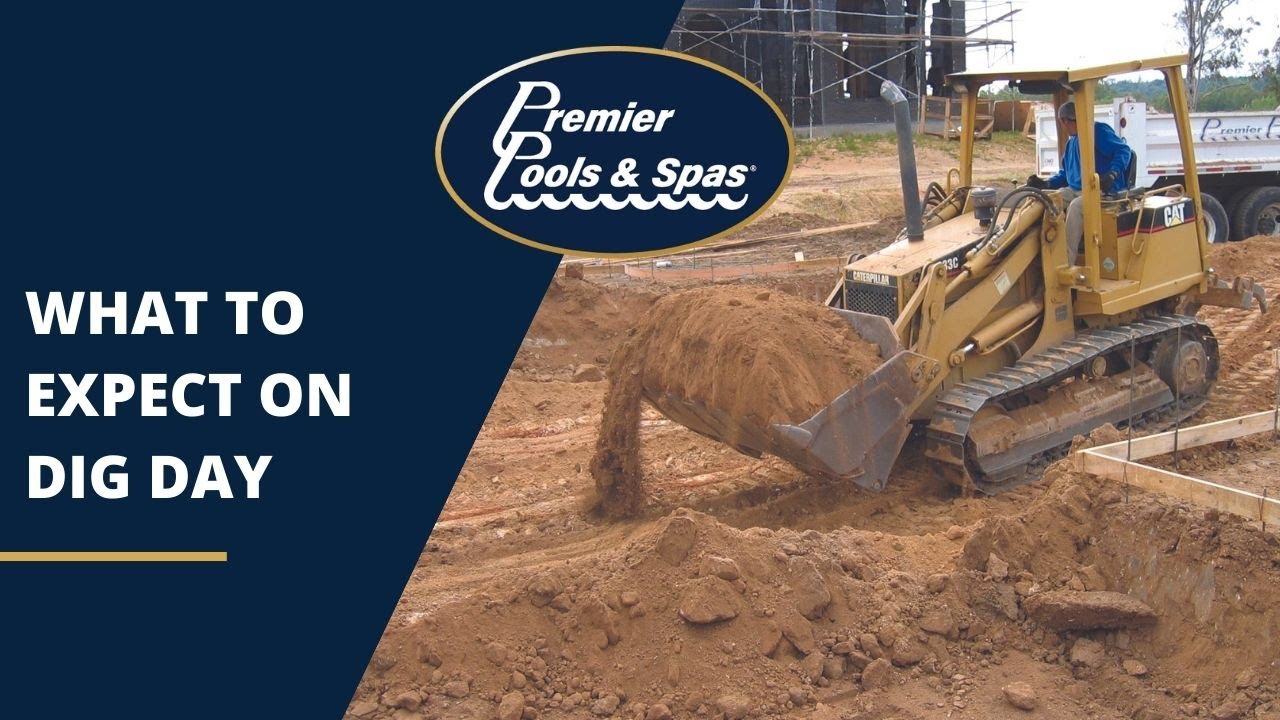
What To Expect On Dig Day
We’re going to talk about dig day, which is really the most exciting day of the entire inground pool building process. To talk about dig day we need to talk about what is going to happen on dig day and what happens with specific types of pools.
Types Of Inground Pools
We’re going to talk about a couple specific types of pools. With those pool types being the concrete pools which is your shotcrete or gunite pools and your fiberglass pools. So, let’s dive on in.
Gunite or Shotcrete Pools
Gunite or shotcrete pools are your inground pools that are typically speaking highly customized. First we’re going to have those plans well in place before we take a single scoop of dirt out of that yard we are going to layout. The entirety of the pool permits, where required, should be in place at that point in time.
This is where we’re going to mark where electrical lines are going to be coming from, where your skimmers are, and where the lights are on the pool. What we will typically do for a gunite shotcrete pool is to dig that pool larger than the pool is going to finish to water line because you’ll typically have eight inches to a foot of extra space around that pool that is going to be filled in by that shotcrete.
Once that pool is painted out we are going to walk the entire pool. We’re going to talk about the steps, we’re going to talk about the depths in that pool, and make sure that you love it because once that pool is dug it is a little bit permanent.
As my dad says “A jackhammer is a terrible eraser.”, so we want to make sure that we get it done right the first time.
Where to Place the Dirt
Now you’ve got a couple different types of things that we can do with the dirt. We’ve got a dirt on site dig which is where we take the dirt from the excavation and actually use it for landscape features, leveling out concrete, or things of that nature. If we’ve got a smaller location or smaller backyard we will take that dirt out.
On typical excavations, if we’ve got nicer soil, on your average pool (which is an approximate 400 square foot) can usually be done in a day.
Hitting Rock
If you hit rock, granite, lava cap, or caliche all bets are off. Oftentimes when we do a pool dig we will do what is known as a double handle dig. Where we’ll have a skid loader actually moving the dirt and an excavator actually digging the dirt or excavating out the dirt. We will usually bring a hydraulic Hammer with us to make that happen. That is what will typically happen on your gunite pool dig day.
Fiberglass Pools
Now let’s talk about fiberglass pools. Fiberglass is very interesting because you’re accomplishing so many phases quickly. With fiberglass we will have pre-measured up that yard very specific to that fiberglass shell. What is key here is to get that fiberglass shell to sit perfectly level within the location that we have dug out.
Oftentimes what we will have is we’ll actually have large tarp templates that will lay out on the dig site. By us having this tarp template what we’re able to do is lay it down perfectly in the ground and know every metric that we need to hit.
We’ll then excavate the pool and what you’re going to do on that point in time is depending on what is needed in the soil you may be putting some sort of a gravel or something under the pool to help it sit and level out at that point in time.
Timing Of Fiberglass
On the fiberglass pool, the excavation is done prior to the shell getting there. All of this will traditionally happen in about a one or two week point in time. Once that hole is dug out then we’re checking and making sure that it is perfect for that fiberglass shell.
Once the shell arrives, all we need to do is drop the shell in, verify everything is level, set it, hook up the plumbing and electrical, and then we are good to go. The great part about it is really getting to that set should only take about about a week to two weeks max.
Credit : Source Post






